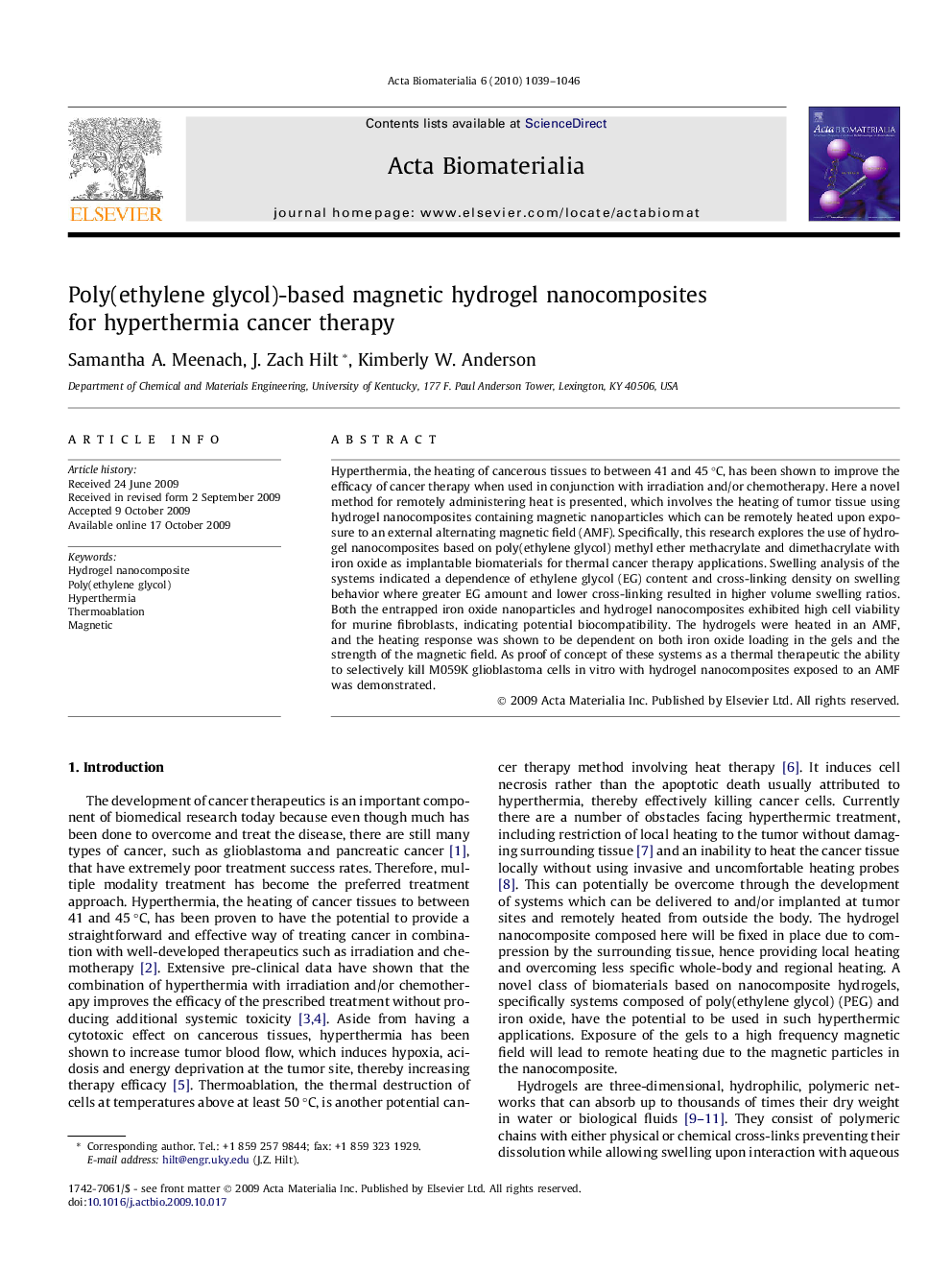| Article ID | Journal | Published Year | Pages | File Type |
|---|---|---|---|---|
| 1677 | Acta Biomaterialia | 2010 | 8 Pages |
Hyperthermia, the heating of cancerous tissues to between 41 and 45 °C, has been shown to improve the efficacy of cancer therapy when used in conjunction with irradiation and/or chemotherapy. Here a novel method for remotely administering heat is presented, which involves the heating of tumor tissue using hydrogel nanocomposites containing magnetic nanoparticles which can be remotely heated upon exposure to an external alternating magnetic field (AMF). Specifically, this research explores the use of hydrogel nanocomposites based on poly(ethylene glycol) methyl ether methacrylate and dimethacrylate with iron oxide as implantable biomaterials for thermal cancer therapy applications. Swelling analysis of the systems indicated a dependence of ethylene glycol (EG) content and cross-linking density on swelling behavior where greater EG amount and lower cross-linking resulted in higher volume swelling ratios. Both the entrapped iron oxide nanoparticles and hydrogel nanocomposites exhibited high cell viability for murine fibroblasts, indicating potential biocompatibility. The hydrogels were heated in an AMF, and the heating response was shown to be dependent on both iron oxide loading in the gels and the strength of the magnetic field. As proof of concept of these systems as a thermal therapeutic the ability to selectively kill M059K glioblastoma cells in vitro with hydrogel nanocomposites exposed to an AMF was demonstrated.
